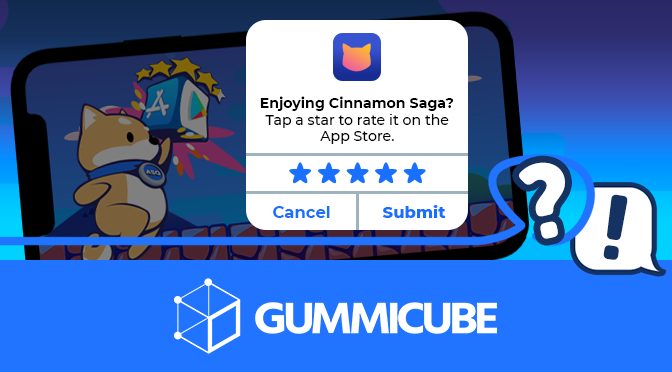
5 Best Practices for Apple Search Ads
Posted on July 3rd, 2024
Are you leveraging Apple Search Ads the right way? Take a look at these recommendations to optimize your paid campaigns and target the right users.

How can a developer increase the number of reviews on the app stores? What’s a way to get more positive reviews over time?
These are questions developers tend to ask once they get past the launch phase of their app. Their metadata is structured, their creative looks clean, but how else can you bring in as many users as you can?
One factor that is often overlooked is an app’s average star rating and reviews.
Where does the average star rating come from? How do I get positive reviews? We will look at how these numbers are derived and how a developer can improve them over time.
Apple defines an App Rating as a star rating:
... on a scale of one to five stars. Individual ratings inform your app’s summary rating, which is displayed on your product page and in search results.
A rating is a quantitative indicator of user experience within an app. If an app tends to have positive ratings (4 Stars and above), users will be more inclined to download. If an app has a negative rating (3 stars and below), it indicates that users are having a negative experience.
Ratings are often coupled (but not always) with App Reviews.
This summary rating is specific to each territory on the App Store and you can reset it when you release a new version of your app. However, we recommend using this feature sparingly. While resetting the summary rating can ensure that it reflects the most current version of your app — useful if an update addresses users’ previous concerns — having few ratings may discourage potential users from downloading your app.
If you are experiencing a large volume of negative ratings, it’s best that the app is reviewed by the development team to ensure that any major bugs or issues are addressed before resetting. It may be something small that impacts the overall user experience.
App reviews are long-form comments that users can leave in conjunction with a rating. Users can use this space to express their satisfaction or air their concerns about an app’s functionality or business model.
Even if a developer decides to reset the average star rating, users will still be able to see older reviews on the product page.
Written reviews allow users to share more detail about their experience with an app. Users can review iOS, iPadOS, and macOS apps on the app’s product page on their device, and review watchOS apps on their iOS device. If you choose to reset your summary rating, past reviews will continue to display on the product page.
Users have the ability to write brief reviews or lengthy accounts of their experiences. If a user experiences bugs in the onboarding process, during important pieces of gameplay or elsewhere, they could choose to leave a scathing review that could ultimately hurt conversion rates if other users see it.
On top of ongoing reputation management, how can a developer begin to gather more positive reviews and ratings over time?
Apple has its own API available for developers to integrate within the app, SKStoreReviewController.
This allows users to leave reviews and/or ratings natively while using the app, not requiring them to load an additional page in the App Store to manually leave a review.
A simple notification prompting a user to leave a rating/review is one thing, but it comes down to when you would want to ask a user to complete the action.
As a best practice, developers should input the prompt after a positive action, beyond the onboarding (should an app have an onboarding flow) and after a relevant action (in the context of the app) is complete. If your app is a task management app, consider having the notification appear after a few tasks have been marked as completed.
This is crucial- in order to increase your chances of getting a positive rating or positive review, a user needs to immediately correlate their response with something inherently positive. If a request is sent randomly, possibly after a negative experience, the user may be more inclined to leave a negative response.
As an addition, returning users who open the app often are likely to have a more positive experience than others. Time the reviews for users who are not just having a good experience tied to events, but rather users who keep returning to use the app.
Note that developers can only request reviews up to three times in a 365 day cycle, making it more important to time the requests.
Positive star ratings and reviews will take time to grow, but can have a significant impact on how users convert on the search results the first time they find you. Gummicube has seen that overall conversion rates can begin to decline between 0.25% to 0.75% for every 0.1 point decline in rating score, making it imperative to immediately address user concerns and start gathering feedback and ratings where users are having the best experience thus far.
Want to learn more about App Store Optimization? Contact Gummicube and we’ll help get your strategy started.

Are you leveraging Apple Search Ads the right way? Take a look at these recommendations to optimize your paid campaigns and target the right users.

Ghostly happenings are among us... and in your app listing too? If you aren't leveraging the power of app seasonality to make relevant tweaks to your store listing you're leaving precious engagement and conversions on the table.

Developers on the iOS App Store should plan in advance of the upcoming Holiday Schedule to allow enough time for apps to get approved during the busy holidays.